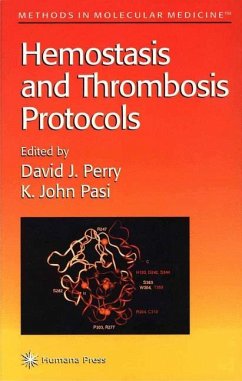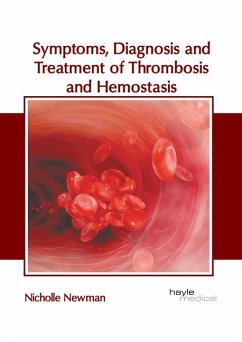Laboratory studies in hemostasis have traditionally focused on abn- malities of platelet function or the quantitative and qualitative disorders that affect the proteins involved in blood coagulation. However, over the last 10 years there has been an explosion in our understanding of the molecular bases that underlie many of the inherited and acquired disorders of hemostasis. Many of these disorders are now routinely diagnosed and assessed by methods that involve genotypic analysis. Indeed in the late 1990s the distinction between molecular methods for research and for routine diagnosis is becoming incre- ingly blurred. The techniques and approaches that are used in hemostasis are manifold and published in isolation in a variety of publications. The aim, therefore, of this volume Hemostasis and Thrombosis Protocols is to pull together, into a single volume, the variety of techniques that are frequently used in the field of hemostasis. We have targeted this volume at laboratories who wish to move into the field of molecular hemostasis or who may already have some expe- ence in this area but wish to develop new areas of research and diagnosis. The chapters are wide-ranging and hopefully provide a broad overview of the d- fering applications in which these standard techniques can be used. Though the articles may appear relatively specific, the techniques contained within them are applicable to the study of many different disorders and we hope that they provide a series of ideas and concepts well-suited to problem solving.
"...The book by Perry and Pasi confirms ...that with good recipes and kits the DNA analysis of disorders of thrombosis and hemostasis is indeed feasible for many diagnostic laboratories. The book describes in great detail a variety of laboratory protocols aimed primarily at analyzing inherited disorders of the hemostatic system. These protocols vary from simple procedures to detect factor V Leiden and prothrombin 20210 to elaborate techniques for finding mutations in disorders like hemophilia A or protein S deficiency. In addition ...this book is a useful book for those attempting to introduce or maintain DNA analysis in their laboratory...laboratory technicians may find many useful suggestions to improve their work."-Haemostasis
"Each cheater is presented in a recipe format so that the methods can e reproduced. All chapters subdivided into sections for easy reading: introduction, material, methods, and notes. ...The chapters on mutation detection in clotting factor deficiencies will be useful to hemostasis laboratories that are interested in carrier detection, prenatal diagnosis, or research. The chapters on von Willbrand factor multimer analysis, factor V Leiden mutation, an prothrombin G20210A mutation will be useful to hemostasis laboratories that want to set up these important diagnostic tests...This manual does well at meeting its goal of providing a broad overview of techniques used in the analysis of hemostatic disorders and providing strategies for future problem solving. It will be a great utility to hemostasis laboratories that wish to advance their research or diagnostic capabilities."-Modern Pathology
"very valuable for the laboratory staff in charge of gene analysis of known genetic defects in known diseases of hemostasis and thrombosis." - Bloodline
"Each cheater is presented in a recipe format so that the methods can e reproduced. All chapters subdivided into sections for easy reading: introduction, material, methods, and notes. ...The chapters on mutation detection in clotting factor deficiencies will be useful to hemostasis laboratories that are interested in carrier detection, prenatal diagnosis, or research. The chapters on von Willbrand factor multimer analysis, factor V Leiden mutation, an prothrombin G20210A mutation will be useful to hemostasis laboratories that want to set up these important diagnostic tests...This manual does well at meeting its goal of providing a broad overview of techniques used in the analysis of hemostatic disorders and providing strategies for future problem solving. It will be a great utility to hemostasis laboratories that wish to advance their research or diagnostic capabilities."-Modern Pathology
"very valuable for the laboratory staff in charge of gene analysis of known genetic defects in known diseases of hemostasis and thrombosis." - Bloodline








